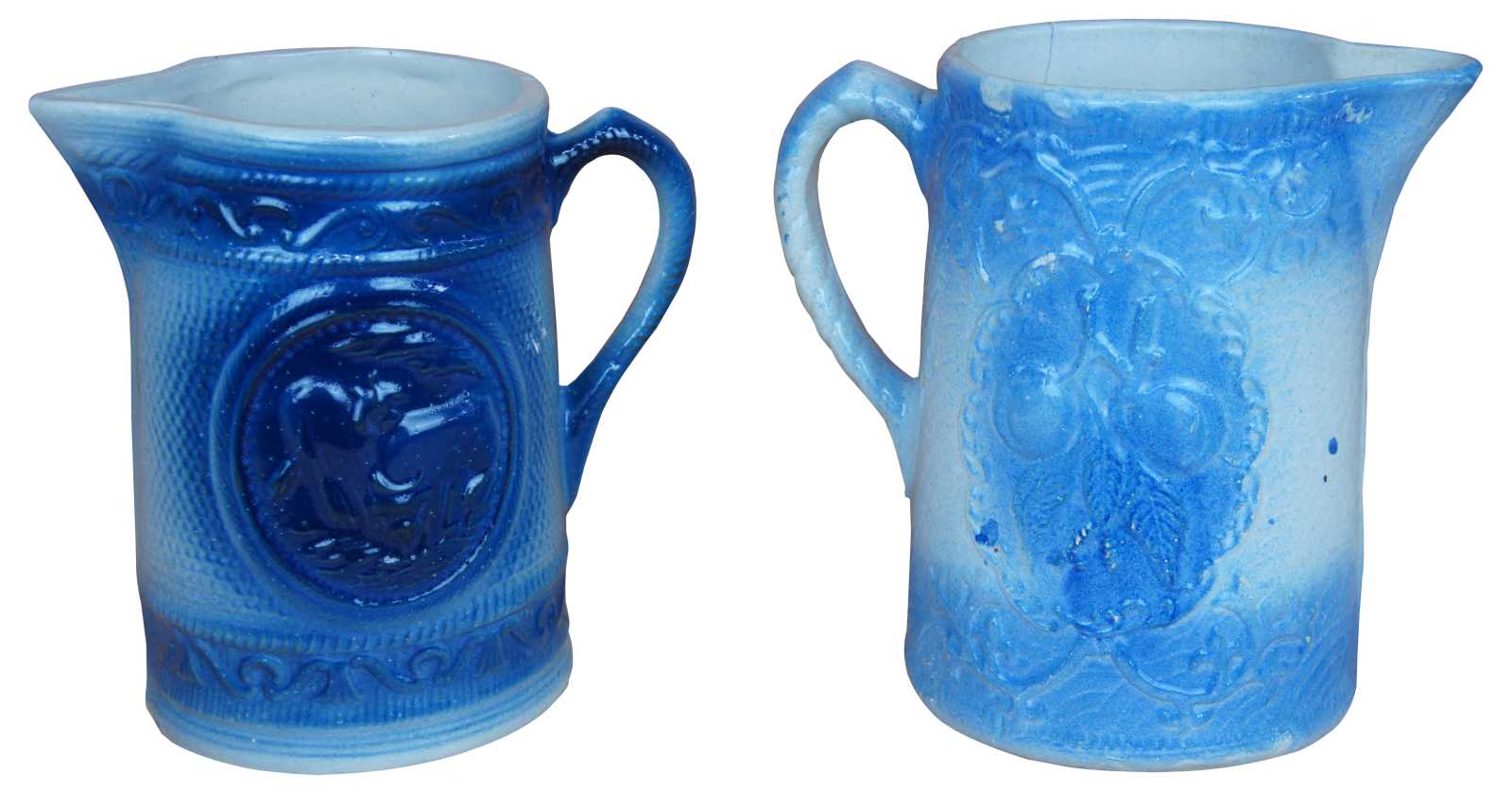
Shipping:
Free Shipping Included
Delivery:
Estimated 2-15 Business Days
Payments:
Credit Card, Check, Cash, PayPal, Apple Pay, Venmo
Returns:
30 Days 100% Money Back Guarantee, Buyer Pays Return Shipping
Description
A.E Hull salt glaze pitchers, circa 1880s. Features grazing cows and apricot and cherries.
A.E. Hull began his career working in Crooksville with his older brother J.J. Hull at The Star Stoneware, before starting his new company. J.J. started helped start a new company, The Acme, which produced fine china. Later The Hull Pottery took over the Acme buildings. J.J. had four sons who remained active in the local family pottery businesses, John, Floyd, Russell and Ralph W Hull.
The company's success continued and, over the next several years, the business expanded. In the 1920s, the A.E. Hull Pottery Company maintained its general offices and factories in Crooksville and had an office and a showroom located in New York, offices in Chicago and Detroit and a large warehouse in New Jersey.[1] It was also during the 1920s that Hull began expanding the variety of his company's product line to art pottery. The company also began using a broader variety of colors and glazing techniques with its products. The various Hull relatives often represented the companies of other relatives in addition to their own.
A.E. Hull died in 1930. Addis E. Hull, Jr. succeeded his father in the management of the business. Hull, Jr. left the company in 1937 to become the General Manager of the Shawnee Pottery company. Gerald F. Watts became the new manager of Hull Pottery. Also in 1937, the company contracted with Shulton Inc. (mostly known for the Old Spice product line) to manufacture pottery cosmetic containers. By the late 1930s through 1950s, Hull was making some of its best work. By far the most popular line to come from the factory was ""Red Riding Hood"", produced in 1943. Hull developed art pottery lines primarily along floral themes: Orchid, Magnolia, Calla Lily, Rose and Tulip to name a few. The trendy pastel matte lines of Hull Pottery were also in high demand. Hull's product line expanded to include piggy banks, liquor bottles, and lamps. The company's Floristware line was one of Hull Pottery's most successful lines. From the 1940s through the 1960s, a plant or flower bouquet delivered from a florist was often contained in a Hull pot or figural planter.
Condition
Good Antique Condition; small hairline in cherry/apricot pitcher; chipping
Dimensions
darker- 8 x 5 x 8, 8.5 x 6 x 8.25
You May Also Like